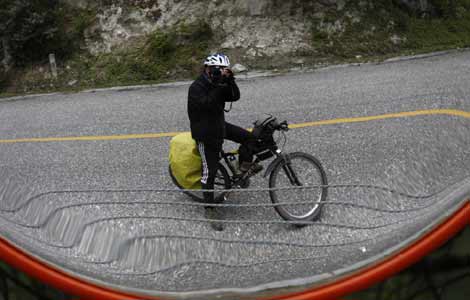Panda cubs big draw for tourists to Sichuan
Updated: 2011-10-08 11:14
By Huang Zhiling (China Daily)
|
|||||||||
 |
|
Newborn panda cubs at the Chengdu Research Base of Giant Panda Breeding in Southwest China's Sichuan province play in an open field on Tuesday. Yuan Bo / for China Daily |
CHENGDU - The Chengdu Research Base of Giant Panda Breeding is well known for attracting more foreign visitors than the city of Chengdu, capital of Southwest China's Sichuan province.
That trend was repeated in 2011. And many of the visitors had an extra reason for coming: Twelve panda cubs were recently born at the research base, according to Zhang Zhihe, the base chief.
Partly as a result of that, an average of 10,000 people visited the remote base in the northern suburbs of Chengdu on each of the seven days of the 2011 National Day, which ended on Friday.
And almost all of them were Chinese hailing from throughout the country, according to Yang Feifei, a base official.
At other times of the year, between 2,000 and 3,000 people come every day to the base, which is home to 108 pandas. Many of them are overseas visitors, she said.
The base began to display the cubs to tourists on Sept 26, right before the start of the holiday. From 7:30 am to 6 pm, visitors could look at the little bears through the window of a delivery room.
Although it was either cloudy or rainy in Chengdu on the first three days of the holiday, visitors crowded into a corridor outside the delivery room to take pictures of the cubs, said He Ping, a 35-year-old panda keeper who has worked in the base for a decade.
Of the 12 cubs, eight are twins. Because they are only one or two months old, they are weak and sleep most of the time despite the huge influx of noisy visitors from outside.
Occasionally when a panda opened its mouth to yawn, the visitors would get excited and let out gleeful noises, He said.
The climax of the panda trip came on the morning of Oct 4, when the sun broke through the clouds for the first time during the holiday.
Keepers put the cubs in baskets and took them to an open field for a sunbath, said Pu Anning, chief of the base's general office.
The base was set up in 1987 as a home for six sick pandas rescued from the wild. At that time, there were three large obstacles to breeding pandas: Captive pandas had difficulties in rutting, becoming pregnant and bringing up their cubs.
After much work, researchers found ways to overcome those difficulties. As a result, the base now boasts of having the largest population of captive pandas in the world, Zhang said.










